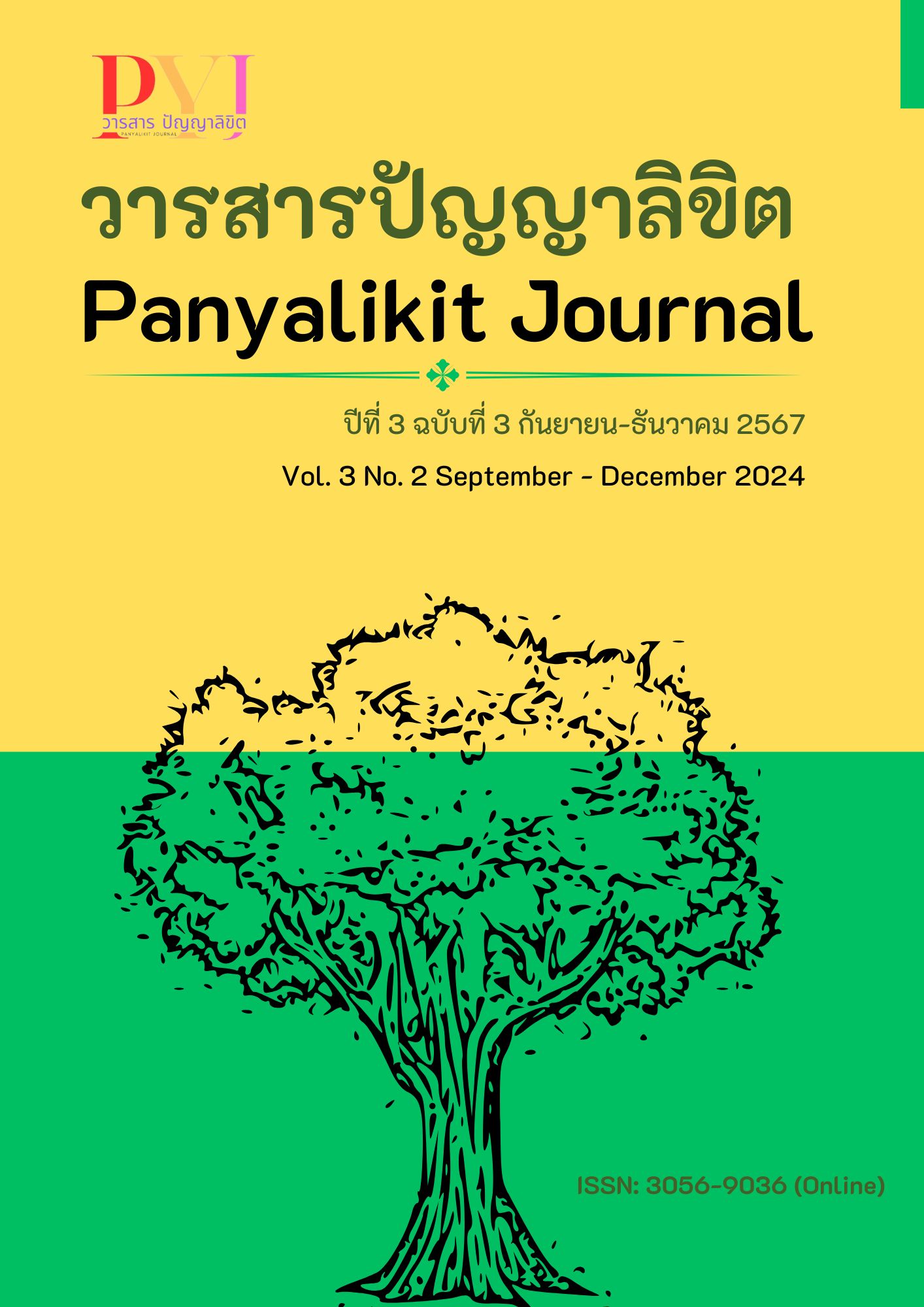The influence of religious beliefs in the Naga Cave area on local community development
Main Article Content
Abstract
This academic article aims to show the influence of religious beliefs in the Naga cave area on the development of local communities. The results of the study found that the Naga cave is a heritage site in the northeastern region of Thailand, which is believed to be the result of the Naga creating a beautiful and profound place. The belief in the Naga is that it is a creature with great power, such as if you ask for a blessing from the Naga, your life will be prosperous. The spiritual belief is that the Naga cave is a place to practice meditation and train your spirit to be peaceful and free from suffering. The belief in the Naga cave plays an important role in strengthening the social and cultural relationships of the local community. Rituals and activities, such as praying to the jade Buddha image and paying homage to the Naga, held in the Naga cave are an opportunity for villagers to come together and create unity in the community. Preserving these traditions and rituals not only helps to strengthen unity, but also encourages the new generation to become aware of the cultural heritage of the local community. It is also a community tourist attraction, another place that helps stimulate the economy of the community in the Naga cave area. People from all over the country travel to visit the Naga cave, resulting in the expansion of local businesses, such as souvenir shops, restaurants, and accommodation for tourists, which directly affects the income of the villagers and the development of infrastructure in the community, especially the development of infrastructure to support tourism, the development of access routes to the Naga cave, and facilities in the area, resulting in more tourists visiting. and has a direct impact on the development of local communities to continue to flourish.
Article Details

This work is licensed under a Creative Commons Attribution-NonCommercial 4.0 International License.
References
เดลินิวส์ออนไลน์. (2565). เปิดประวัติ “ถ้ำนาคี” ดินแดนสิ่งศักดิ์สิทธิ์แหล่งท่องเที่ยวอันชีนนครพนม. สืบค้นเมื่อ 30 กันยายน 2567, จาก https://www.dailynews.co.th/news/766647/
ธารารัตน์ มหาพันธ์ และ นิรมล สัมมัตตะ. (2567). ปัจจัยที่ส่งผลต่อความต้องการของนักท่องเที่ยวในการเดินทางท่องเที่ยวถ้ำนาคี อุทยานแห่งชาติภูลังกา จังหวัดนครพนม. Journal of Engineering Technology Access, 4(1), 1-11.
ผู้จัดการออนไลน์. (2564). ถ้ำนาคีของดีคู่ถ้ำนาคา อุทยานแห่งชาติภูลังกาชวนเที่ยว หลังดารา-คนดัง นิยมไหว้พระขอพร. สืบค้นเมื่อ 30 กันยายน 2567, จาก https://mgronline.com/travel/detail/ 9640000114778
วันชัย จันทร์พร. (2566). ผู้ว่าฯ นครพนม นำหัวหน้าส่วนราชการ สื่อมวลชน ลงพื้นที่ประชาสัมพันธ์แหล่งท่องเที่ยวถ้ำนาคี อุทยานแห่งชาติภูลังกา. สืบค้นเมื่อ 30 ตุลาคม 2567, จาก http://www2.nakhonphanom.go.th/news/detail/1415/data.html
สำนักข่าว Sanook ออนไลน์. (2565). สายมูต้องตาม! เปิดตำนาน & ความศักดิ์สิทธิ์ของ "ถ้ำนาคี". สืบค้นเมื่อ 30 ตุลาคม 2567, จาก https://www.sanook.com/horoscope/228577/
สำนักงานจังหวัดนครพนม. (2565). ถ้ำนาคีอุธยานแห่งชาติภูลังกา บ้านแพง. สืบค้นเมื่อ 30 กันยายน 2567, จาก http://www2.nakhonphanom.go.th/charm/detail/78
สำนักงานประชาสัมพันธ์จังหวัดนครพนม. (2560). การบริหารจัดการส่งเสริมการท่องเที่ยวถ้ำนาคีและการปรับภูมิทัศน์สองฟากฝั่งห้องฮ่องฮอสานต่อแนวคิดหลวงปู่คำพันธ์ โฆสปัญโญ เกจิอาจารย์ลุ่มน้ำโขง. สืบค้นเมื่อ 30 ตุลาคม 2567, จาก http://www2.nakhonphanom.go.th/news/detail/763
สุรดา กาลวิบูลย์. (2565). พุทธศาสนากับพลวัตทางความเชื่อในสังคมไทย. วารสารนาคบุตรปริทรรศน์ มหาวิทยาลัยราชภัฏนครศรีธรรมราช, 14(3), 13-23.
Summerb. (2564). ถ้ำนาคี ที่เที่ยวนครพนม อุทยานแห่งชาติภูลังกา ชมหินลายเกล็ดพญานาคสุด Unseen. สืบค้นเมื่อ 30 ตุลาคม 2567, จาก https://travel.trueid.net/detail/v7n11zO5YKDk


